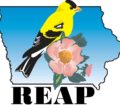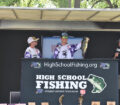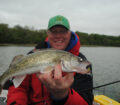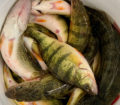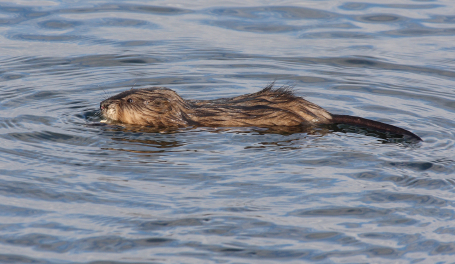By Steve Weisman
Over the past few years, there has been a lot of talk around the state about the Iowa Department of Natural Resources (DNR) and its budget. Basically, there are two areas of revenue: (1) the Fish and Wildlife Trust Fund and (2) General Fund money from the Iowa legislature. The Fish and Wildlife Trust Fund is generated through the sale of fishing, hunting and trapping license sales. An amendment to the Iowa Constitution in 1996 constitutionally protects these dollars so they cannot be used for any other purpose than for fish and wildlife-related research, education, management and expansion of natural resource opportunities in Iowa. These dollars provide the platform from which other funds are matched, which greatly increases the money that the DNR can use to meet its financial commitments.
Unfortunately, the license fees have not been increased for nearly 15 years, and the DNR has had to operate at the same funding level for many of those years. Obviously, inflation has eaten away at the budget, to the point where the agency is backed up to a cliff, and if something isn’t done, many services are going to be slashed or eliminated.
At the same time, the allocation of General Fund money that the DNR receives for natural resource operations from the state Legislature has been cut almost in half since 2009, from $22.1 million to $11.3 million. Just a few weeks ago, the DNR was forced to cut $1.2 million dollars. As a result, the Forestry Bureau was axed along with the elimination of eight jobs. Supposedly, there will be no loss of services, because other areas in the DNR will absorb these services. That is easy to say, but when you eliminate an entire bureau and shift it to other bureaus, something has to give. I doubt that services will continue at the level they were before the cuts!
We really are at a point where we need to increase funding. In a future article, we will discuss the NEED FOR AN INCREASE IN FISHING, HUNTING and TRAPPING license fees. Before we do that, however, let’s discuss the bureaus under the trust fund, followed by where trust funds dollars are generated. All of this information comes from the DNR’s fiscal year report.
Three bureaus head the management and regulation of Iowa’s wildlife and fishery resources: Fisheries, Wildlife and Law Enforcement.
Fisheries Bureau
The Fisheries Bureau manages eight hatcheries, 200 lakes, 19,000 miles of interior rivers, 200,000 acres of bordering rivers and 78 trout streams, and establishes fishing opportunities for Iowans across the state. The DNR’s Fisheries Research Program focuses on evaluating existing fisheries management practices, innovating new techniques, and advancing the science and technology used to improve fishing in Iowa’s lakes, rivers, and ponds. The bureau’s work includes a broad range of water quality improvement projects, research, aquatic education and fish stocking.
Wildlife Bureau
The Wildlife Bureau is responsible for the management of Iowa’s abundant wildlife resources and oversees 463 public wildlife areas, 724 control structures, 237 miles of levees and dikes, 313 boat ramps, 1,317 parking lots and 9 shooting ranges. Professional wildlife staff performs surveys, census, and research studies that produce data and provide for science-based management and policy decisions. Of the 35,756,390 acres of Iowa’s land, publicly owned acres managed by the department total 485,774 acres, which include wildlife areas funded by Trust Fund dollars and state forests, parks and preserves funded by non-Trust fund dollars. Of those acres managed by the DNR, over 140,996 acres are owned by another public agency, mainly the US Fish and Wildlife Service or the US Army Corps of Engineers.
Law Enforcement Bureau
The Law Enforcement Bureau ensures that Iowa’s fish, game and public natural area laws are followed which have a direct effect on the health of Iowa’s natural resources. Officers have diverse duties in addition to enforcement, including public education, public relations, inspections and outreach.
How the budget works
Both short term and long term planning must occur so the Trust Fund remains solvent and sustainable over time. Licenses and fee sales only occur at certain times of the year, and sales are weather dependent. Federal funds are received quarterly and, in some instances, must be processed as reimbursements for projects that the Trust Fund “carried” for a period of time. Boat registration fees, for instance, are received in a three-year cycle and the department must average the three years of revenue to meet annual expenses and provide the services as outlined in Iowa Code. Unlike other bureaus funded with state General Funds, the Trust Fund must absorb expenses for automatic salary increases negotiated by the unions, costs of retirement benefits and insurance payout programs for Trust Fund staff. It takes approximately $3,000,000 per month to “cash flow” operations and projects for the three Trust Fund bureaus. The Trust Fund budget must be carefully planned so there is a minimum of $3,000,000 per month throughout the entire year, despite the fluctuating revenue into the Trust Fund during that year.
Where the trust funds come from
Too often, I feel, we think that the Fish and Wildlife Trust Fund is income derived only from fishing and hunting licenses. What the license money does is provide the platform from which other funds are matched. Let’s take a look where the money comes from.
- General Hunting and Fishing License Fees: This category includes all hunting and fishing licenses, deer and turkey permits, commercial fishing licenses, and several miscellaneous licenses such as private fish hatchery licenses, bait dealer licenses, etc.
- Habitat Stamps: In addition to a license, hunters and trappers are also required to purchase Wildlife Habitat Stamps. Proceeds from the stamps are earmarked for the acquisition and development of wildlife habitat. Fifty percent of the revenue is made available to county conservation boards on a 75 percent/25 percent cost-share basis for habitat acquisition and development at the county level. Three dollars of every Season and 7-Day fishing license is dedicated to fish habitat improvement. Fifty percent of the revenue is made available to county conservation boards on a 90 percent/10 percent cost share basis.
- State Waterfowl Stamps: The revenue from these stamps is used for the purpose of protecting and propagating migratory waterfowl and for the acquisition, development, restoration, maintenance and preservation of wetlands. Fifteen percent is made available to Ducks Unlimited for Canada projects.
- Trout Stamps: The revenues from this stamp are used exclusively to stock state trout streams designated by the commission.
- Nongame Checkoff: An income tax checkoff for nongame has been established, with a policy of using all those funds for the purposes of preserving, protecting, perpetuating and enhancing nongame wildlife in the state.
- Pittman-Robertson Wildlife Restoration Federal Aid: This revenue is derived from an 11 percent federal excise tax on hunting arms and ammunition. It is apportioned to the states using a formula based both on land area and number of paid hunting licenses sold. This must be matched on a 75 percent federal/25 percent state basis. Projects may include wildlife area operations, wildlife research, land acquisition, and wildlife habitat development. The US Fish & Wildlife Service must approve all projects.
- Hunter Safety Federal Aid: The Fish & Game Trust Fund also receives federal aid for hunter safety from a federal excise tax on small arms and ammunition, using a 75 percent federal/25 percent state match formula. Iowa has followed a consistent practice of using about one-half for hunter safety and the remainder for wildlife operations and research.
- Dingell-Johnson Fisheries Federal Aid: This revenue is collected through a 10 percent federal excise tax on fishing equipment and is distributed to the state on a formula based on land size and number of paid fishing licenses sold. In 1984, the Wallop-Breaux Amendment expanded the Dingell-Johnson program. The original excise tax was expanded to cover imported fishing gear, boats and motors. The Dingell-Johnson program funds fisheries-related research, management of fish culture, habitat acquisition and development. It can also be used for hatchery construction, aquatic education, boating access, fisheries management, operations and capitals. A minimum of 15 percent must be spent on boat access.
- Miscellaneous Sources of Revenue for the Trust Fund: Boating Safety Funds; Agricultural Lease Income; Liquidated Damages; Controlled Hunting Fees; Ducks Unlimited Marsh Program; Interest; Corps Reservoir Agricultural Leases; Timber Sales; Concession Income; Fish Restitution (from fish kills); Sale of Used Equipment; Sale of Publications; Commercial Fishing Contracts; etc.
It really does become a complex funding system, when all of this is put together. Hopefully,
this gives helps clear up some of the misconceptions about the budget. Join me in a future article as I discuss the desperate need for a license increase.


